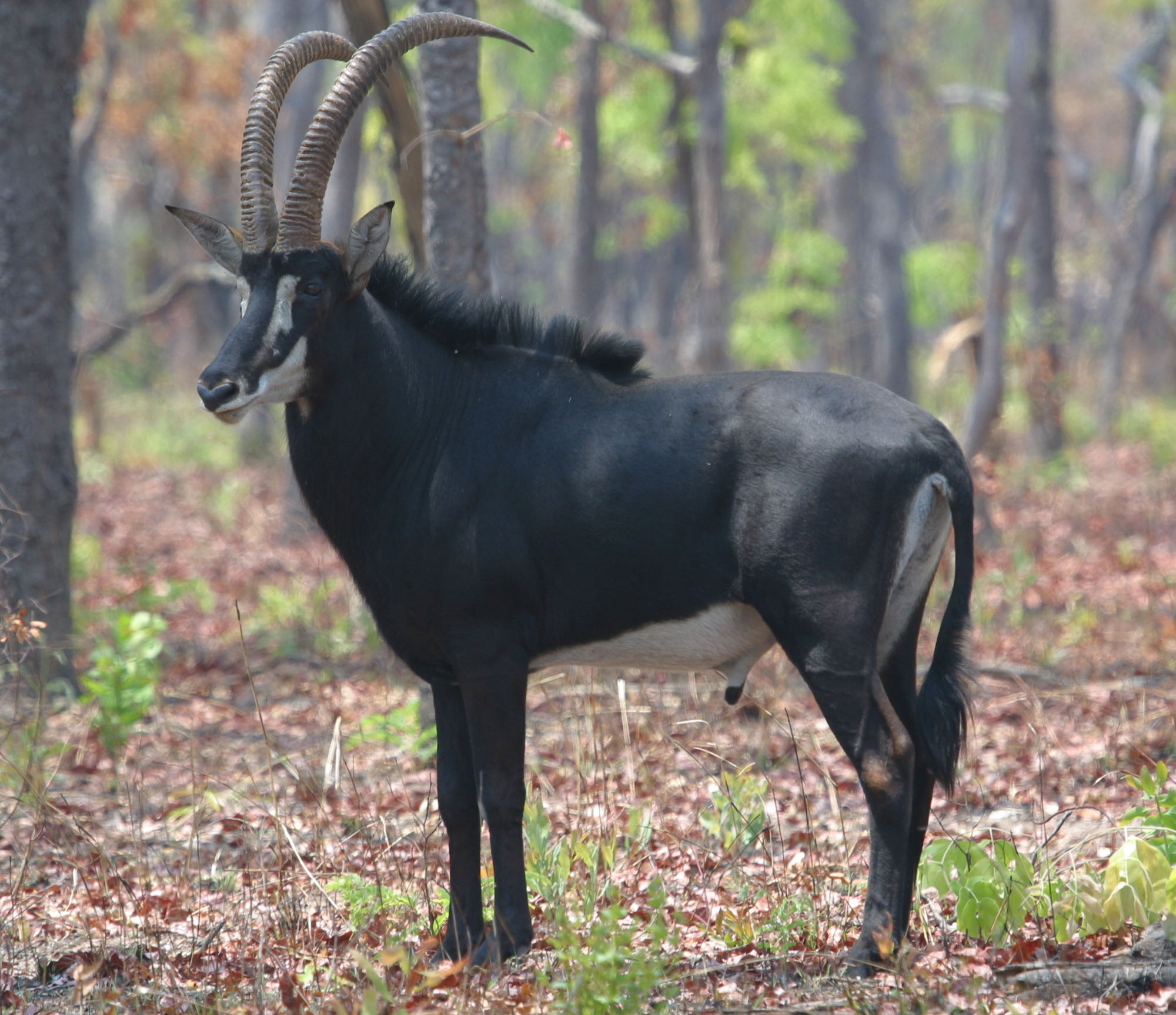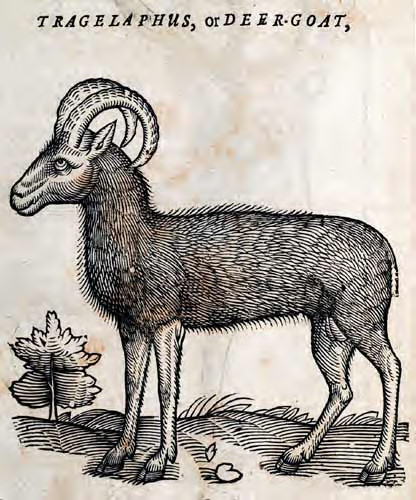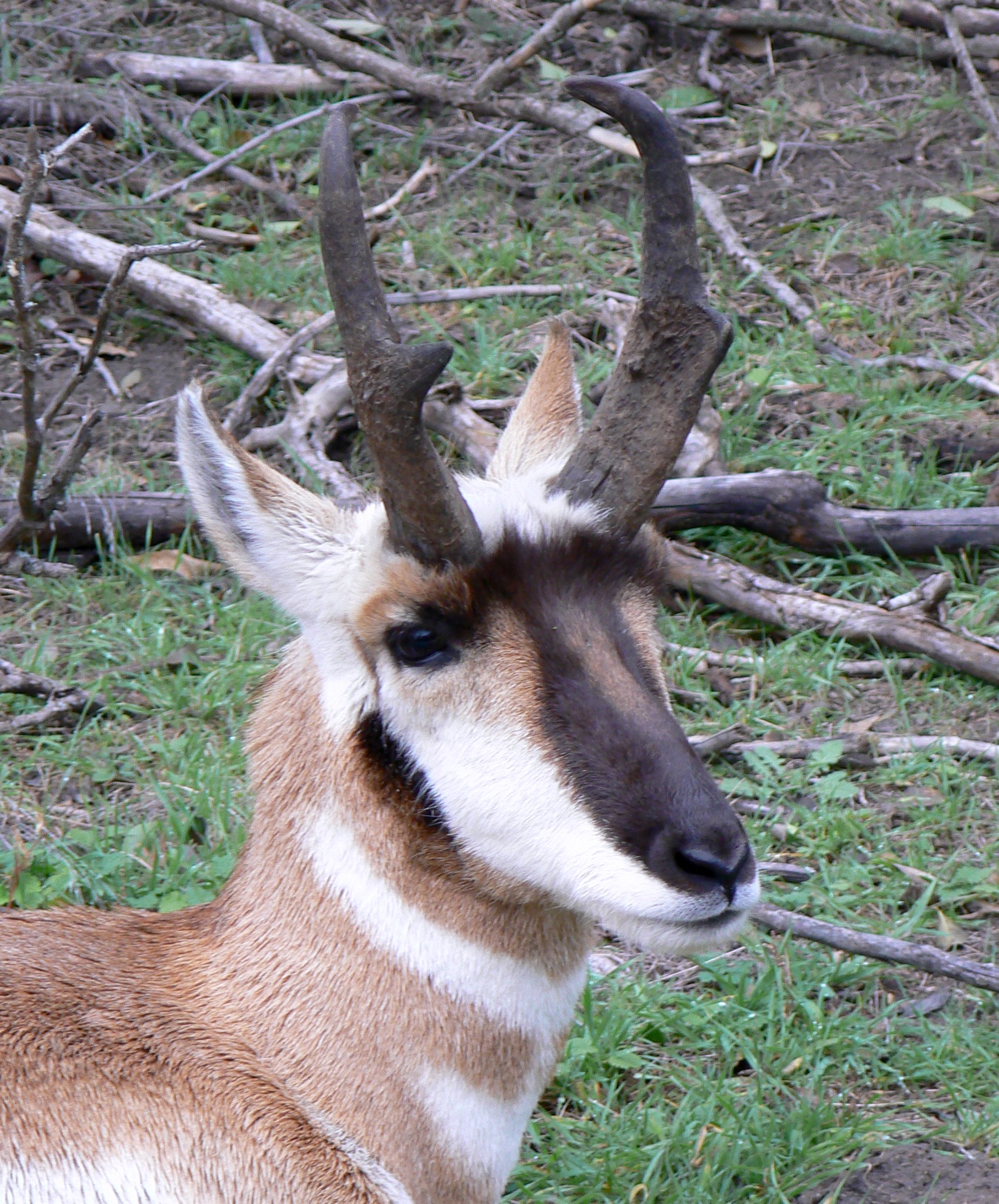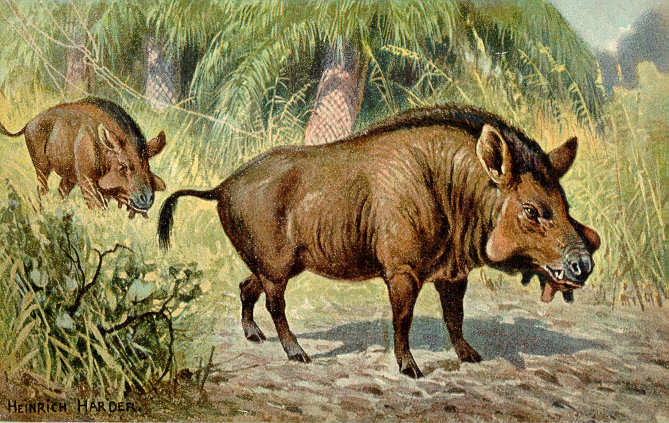|
Antelope
The term antelope is used to refer to many species of even-toed ruminant that are indigenous to various regions in Africa and Eurasia. Antelope comprise a wastebasket taxon defined as any of numerous Old World grazing and browsing hoofed mammals belonging to the family Bovidae of the order Artiodactyla. A stricter definition, also known as the "true antelopes," includes only the genera '' Gazella'', '' Nanger'', '' Eudorcas'' and '' Antilope''. One North American species, the pronghorn, is colloquially referred to as the "American antelope," but it belongs to a different family from the African and Eurasian antelopes. A group of antelope is called a herd. Unlike deer antlers, which are shed and grown annually, antelope horns grow continuously. Etymology The English word "antelope" first appeared in 1417 and is derived from the Old French ''antelop'', itself derived from Medieval Latin ''ant(h)alopus'', which in turn comes from the Byzantine Greek word ἀνθόλοψ ... [...More Info...] [...Related Items...] OR: [Wikipedia] [Google] [Baidu] |
Pantholopinae
The Tibetan antelope or chiru (''Pantholops hodgsonii'') (, pronounced ; ) is a medium-sized bovid native to the northeastern Tibetan plateau. Most of the population live within the Chinese border, while some scatter across India and Bhutan in the high altitude plains, hill plateau and montane valley. Fewer than 150,000 mature individuals are left in the wild, but the population is currently thought to be increasing. In 1980s and 1990s, they had become endangered due to massive illegal poaching. They are hunted for their extremely soft, light and warm underfur which is usually obtained after death. This underfur, known as ''shahtoosh'' (a Persian word meaning "king of fine wools"), is used to weave luxury shawls. Shahtoosh shawls were traditionally given as wedding gifts in India and it takes the underfur of three to five adult antelopes to make one shawl. Despite strict controls on trade of shahtoosh products and CITES listing, there is still demand for these luxury items. ... [...More Info...] [...Related Items...] OR: [Wikipedia] [Google] [Baidu] |
Tragelaphini
The tribe Tragelaphini (sometimes referred to by some authors as "Strepsicerotini"), or the spiral-horned antelopes, are bovines that are endemic to sub-Sahara Africa. These include the bushbuck, kudus, and the elands. The scientific name is in reference to the mythical creature the tragelaph, a Chimera with the body of a stag and the head of a goat. They are medium-to-large, tall, long-legged antelopes characterized by their iconic twisted horns and striking pelage coloration patterns (most common is the distinctive white, vertical barring). Despite being among the largest species of antelope, they are actually more closely related to cattle (''Bos taurus''), and together along with a few apparent Asiatic species belong to the subfamily Bovinae. While the group's evolutionary history occurred in Africa, there have been fossil species that have been found in Eurasia (which may also be the place of origin for this group). The number of genera and species is debated as some consi ... [...More Info...] [...Related Items...] OR: [Wikipedia] [Google] [Baidu] |
Bovidae
The Bovidae comprise the biological family of cloven-hoofed, ruminant mammals that includes cattle, bison, buffalo, antelopes, and caprines. A member of this family is called a bovid. With 143 extant species and 300 known extinct species, the family Bovidae consists of 11 (or two) major subfamilies and thirteen major tribes. The family evolved 20 million years ago, in the early Miocene. The bovids show great variation in size and pelage colouration. Excepting some domesticated forms, all male bovids have two or more horns, and in many species, females possess horns, too. The size and shape of the horns vary greatly, but the basic structure is always one or more pairs of simple bony protrusions without branches, often having a spiral, twisted or fluted form, each covered in a permanent sheath of keratin. Most bovids bear 30 to 32 teeth. Most bovids are diurnal. Social activity and feeding usually peak during dawn and dusk. Bovids typically rest before dawn, during mi ... [...More Info...] [...Related Items...] OR: [Wikipedia] [Google] [Baidu] |
Blackbuck
The blackbuck (''Antilope cervicapra''), also known as the Indian antelope, is an antelope native to India and Nepal. It inhabits grassy plains and lightly forested areas with perennial water sources. It stands up to high at the shoulder. Males weigh , with an average of . Females are lighter, weighing or on average. Males have long, ringed horns, though females may develop horns as well. The white fur on the chin and around the eyes is in sharp contrast with the black stripes on the face. The coats of males show a two-tone colouration; while the upper parts and outsides of the legs are dark brown to black, the underparts and the insides of the legs are white. Females and juveniles are yellowish fawn to tan. The blackbuck is the sole living member of the genus ''Antilope'' and was scientifically described by Carl Linnaeus in 1758. Two subspecies are recognized. The blackbuck is active mainly during the day. It forms three type of small groups, female, male, and bachelor ... [...More Info...] [...Related Items...] OR: [Wikipedia] [Google] [Baidu] |
Oreotraginae
The klipspringer (; ''Oreotragus oreotragus'') is a small antelope found in eastern and southern Africa. The sole member of its genus and subfamily/tribe, the klipspringer was first described by German zoologist Eberhard August Wilhelm von Zimmermann in 1783. The klipspringer is a small, sturdy antelope; it reaches at the shoulder and weighs from . The coat of the klipspringer, yellowish gray to reddish brown, acts as an efficient camouflage in its rocky habitat. Unlike most other antelopes, the klipspringer has a thick and coarse coat with hollow, brittle hairs. The horns, short and spiky, typically measure . Typically nocturnal, the klipspringer rests during the middle of the day and late at night. A gregarious animal, the klipspringer is monogamous to a much greater extent than other antelopes; individuals of opposite sexes exhibit long-term to lifelong pair bonding. The mates tend to stay as close as within of each other at most times. Males form territories, , in which t ... [...More Info...] [...Related Items...] OR: [Wikipedia] [Google] [Baidu] |
Caprinae
The subfamily Caprinae, also sometimes referred to as the tribe Caprini, is part of the ruminant family Bovidae, and consists of mostly medium-sized bovids. A member of this subfamily is called a caprine, or, more informally, a goat-antelope (although they are not considered antelopes). Within this tribe, a prominent clade includes sheep and goats. Some earlier taxonomies considered Caprinae a separate family called Capridae (with the members being caprids), but now it is usually considered either a subfamily within the Bovidae, or a tribe within the subfamily Antilopinae of the family Bovidae, with caprines being a type of bovid. Characteristics Although most goat-antelopes are gregarious and have fairly stocky builds, they diverge in many other ways – the muskox (''Ovibos moschatus'') is adapted to the extreme cold of the tundra; the mountain goat (''Oreamnos americanus'') of North America is specialised for very rugged terrain; the urial (''Ovis orientalis'') ... [...More Info...] [...Related Items...] OR: [Wikipedia] [Google] [Baidu] |
Pronghorn
The pronghorn (, ) (''Antilocapra americana'') is a species of artiodactyl (even-toed, hoofed) mammal indigenous to interior western and central North America. Though not an antelope, it is known colloquially in North America as the American antelope, prong buck, pronghorn antelope and prairie antelope, because it closely resembles the antelopes of the Old World and fills a similar ecological niche due to parallel evolution. It is the only surviving member of the family Antilocapridae. During the Pleistocene epoch, about 11 other antilocaprid species existed in North America.Smithsonian Institution. North American MammalsPronghorn ''Antilocapra americana''/ref> Three other genera ('' Capromeryx'', ''Stockoceros'' and '' Tetrameryx'') existed when humans entered North America but are now extinct. As a member of the superfamily Giraffoidea, the pronghorn's closest living relatives are the giraffe and okapi. See Fig. S10 in Supplementary Information. The Giraffoidea are in ... [...More Info...] [...Related Items...] OR: [Wikipedia] [Google] [Baidu] |
Even-toed Ungulate
The even-toed ungulates (Artiodactyla , ) are ungulates—hoofed animals—which bear weight equally on two (an even number) of their five toes: the third and fourth. The other three toes are either present, absent, vestigial, or pointing posteriorly. By contrast, odd-toed ungulates bear weight on an odd number of the five toes. Another difference between the two is that many other even-toed ungulates (with the exception of Suina) digest plant cellulose in one or more stomach chambers rather than in their intestine as the odd-toed ungulates do. Cetaceans ( whales, dolphins, and porpoises) evolved from even-toed ungulates, and are therefore often classified under the same taxonomic branch because a species cannot outgrow its evolutionary ancestry; some modern taxonomists combine the two under the name Cetartiodactyla , while others opt to include cetaceans in the already-existing Artiodactyla. The roughly 270 land-based even-toed ungulate species include pigs, peccaries, ... [...More Info...] [...Related Items...] OR: [Wikipedia] [Google] [Baidu] |
Antilopinae
The Antilopines are even-toed ungulates belonging to the subfamily Antilopinae of the family Bovidae. The members of tribe Antilopini include the gazelles, blackbucks, springboks, gerenuks, dibatags, and Central Asian gazelles, are often referred to as true antelopes. True antelopes occur in much of Africa and Asia, with the highest concentration of species occurring in East Africa in Sudan, Eritrea, Ethiopia, Somalia, Kenya, and Tanzania. The saigas (tribe Saigini) and Tibetan antelopes inhabit much of central and western Asia. The dwarf antelopes of tribe Neotragini live entirely in sub-Saharan Africa. Classification Family Bovidae * Subfamily Antilopinae ** Tribe Antilopini *** Genus '' Ammodorcas'' **** Dibatag ''Ammodorcas clarkei'' *** Genus'' Antidorcas'' **** Springbok ''Antidorcas marsupialis'' *** Genus '' Antilope'' **** Blackbuck ''Antilope cervicapra'' *** Genus '' Eudorcas'' **** Mongalla gazelle ''Eudorcas albonotata'' **** Red gazelle ''Eud ... [...More Info...] [...Related Items...] OR: [Wikipedia] [Google] [Baidu] |
Bovini
The tribe Bovini, or wild cattle, are medium to massive bovines that are native to North America, Eurasia, and Africa. These include the enigmatic, antelope-like saola, the African and Asiatic buffalos, and a clade that consists of bison and the wild cattle of the genus ''Bos''. Not only are they the largest members of the subfamily Bovinae, they are the largest species of their family Bovidae. The largest species is the gaur (''Bos gaurus''), weighing up to . Bovins and humans have had a long and complex relationship. Five of seven species have been successfully domesticated, with one species (cattle) being the most successful member of their lineage. Domesticated shortly after the last ice age, Op. cit. in there are at least 1.4 billion cattle in the world. Domestic bovins have been selectively bred for beef, dairy products and leather, and serve as working animals. However, many species of wild cattle are threatened by extinction due to habitat loss to make room for cattle f ... [...More Info...] [...Related Items...] OR: [Wikipedia] [Google] [Baidu] |
Reduncinae
The bovid subfamily Reduncinae or tribe Reduncini is composed of nine species of antelope, all of which dwell in marshes, floodplains, or other well-watered areas, including the waterbucks and reedbucks. These antelopes first appear in the fossil record 7.4 million years ago in Eurasia and 6.6 Mya in Africa. Taxonomy * Family Bovidae ** Subfamily Reduncinae *** Genus '' Kobus'' **** Waterbuck, ''Kobus ellipsiprymnus'' **** Kob, ''Kobus kob'' **** Lechwe, ''Kobus leche'' **** Nile lechwe, ''Kobus megaceros'' **** Puku, ''Kobus vardonii'' *** Genus '' Redunca'' **** Southern reedbuck, ''Redunca arundinum'' **** Mountain reedbuck, ''Redunca fulvorufula'' **** Bohor reedbuck The bohor reedbuck (''Redunca redunca'') is an antelope native to central Africa. The animal is placed under the genus '' Redunca'' and in the family Bovidae. It was first described by German zoologist and botanist Peter Simon Pallas in 1767. T ..., ''Redunca redunca'' *** Genus '' Pelea'' **** Grey rheb ... [...More Info...] [...Related Items...] OR: [Wikipedia] [Google] [Baidu] |
Gazelle
A gazelle is one of many antelope species in the genus ''Gazella'' . This article also deals with the seven species included in two further genera, ''Eudorcas'' and '' Nanger'', which were formerly considered subgenera of ''Gazella''. A third former subgenus, '' Procapra'', includes three living species of Asian gazelles. Gazelles are known as swift animals. Some are able to run at bursts as high as or run at a sustained speed of . Gazelles are found mostly in the deserts, grasslands, and savannas of Africa; but they are also found in southwest and central Asia and the Indian subcontinent. They tend to live in herds, and eat fine, easily digestible plants and leaves. Gazelles are relatively small antelopes, most standing high at the shoulder, and are generally fawn-colored. The gazelle genera are ''Gazella'', ''Eudorcas'', and ''Nanger''. The taxonomy of these genera is confused, and the classification of species and subspecies has been an unsettled issue. Currently, th ... [...More Info...] [...Related Items...] OR: [Wikipedia] [Google] [Baidu] |








